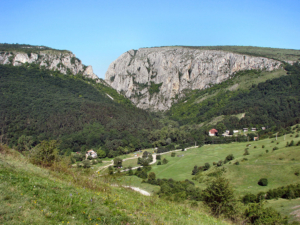The top ten attractions in Transylvania everyone should see – PHOTOS

One should visit Transylvania at least once in a lifetime. It is believed that once you have visited it, you want to go back immediately. The region is truly magnificent; no wonder many people love Transylvania and its beautiful sights.
Magyarországom collected ten must-see attractions in Transylvania for those who have never been there. These sights will give you the starting push and the desire to see even more in the region.
Praid mine (Parajdi sóbánya)
Many consider this attraction to be the most beautiful one beneath the ground – 120 metres deep in the ground, to be exact. It is the biggest salt mine in Europe in Harghita County, providing a unique and exceptional underground world for visitors. Beneath the ground, the visitors’ centre has an Internet connection, guided tours, playgrounds, shops, and even a small cinema.

Székelykő
This natural feature is a huge rock in the Torockó mountains. An interesting feature of this place is that from the village of Torockó, you can see the rising sun in the morning twice: once it appears, it suddenly disappears behind the 1,129-metre high Székelykő, and then it appears again. From the top of the mountain, you can enjoy a breathtaking view.

Turda Gorge (Tordai hasadék)
The location is still the Torockó mountains, but this time the village of Torda and its gorge, which has been a protected area since 1938, are in the spotlight. Inside the almost two-kilometre-long gorge, thirty-two caves were discovered in recent years.

Korond
The village is recommended for those who are keen on craftsmanship, craftworks, and ceramics as Korond plays an important part in these fields. The main road of the village is a special market in every season of the year where tourists and everyone can buy traditional Transylvanian products. The village is also the home of a thermal bath.

Saint Anne Lake
The most beautiful natural feature of Széklerland is the Saint Anna Lake, which was once a volcanic crater. The town of Tusnádfürdő, which is famous for its healing thermal baths, is not far from the lake.

Clock Tower of Sighișoara
The city centre of Segesvár has been a part of the UNESCO World Heritage Sites since 1999, with many beautiful historical buildings. The Clock Tower was built in the 14th century and was the townhouse of Segesvár until 1556. Today, it is a museum, and it is the most remarkable building in town.

The Castle of Count Dracula
The Castle of Törcsvár was allegedly the home of Count Dracula, a character everyone knows. The castle today is a museum and the ideal place for lovers of horrors, crime stories, as well as castle fanatics.

Black Temple
This religious building is located in Brașov – one of the most famous cities in Romania – at the Csenk Mountain. Built between 1383 and 1424, it was the biggest religious building in the Kingdom of Hungary.

Red Lake
One of the most legendary lakes in Transylvania was created in 1837. It is considered to be the number one attraction everyone should see at least once in the region.

Madarasi Hargita
The sacred mountain of the Széklers is also an attraction that you should not miss. From summer to winter, the highest point of Széklerland offers the adventure of a lifetime.

Featured image: Wikimedia Commons by Christo
Source: www.magyarorszagom.hu







I understand that Transylvania used to be part of Hungary and its natural to want to hold on to that, BUT when you publish an article like this to an English speaking audience and the names of places are only in English and Hungarian, it’s just plain misleading and stupid. The fact is that the places are in Romania. Fact. If you want to get people to go there, they ll need the Romanian names too, dont you think?! The places are indeed beautiful and everyone and anyone should go there, and if your actual aim with this article is to attract people to visit, it’s make sense to name the places in Romanian too. Keep the Hungarian names also but add Romanian. Pretty simple. This is done in the Banat region in every town and village but you re not from Banat and I think your aim here might be to mislead potential tourists that Transylvania is somehow Hungarian. Pretty cheap and misleading… but otherwise a good article. Well done and I look forward to more articles like this about what is truly a beautiful region with HUGE potential.
While transylvania is in Romania I see it mentioned only once and even then just in passing. I also see all the mountain names are in Hungarian and not their original romanian titles(same goes for most cities here). Why is this so?